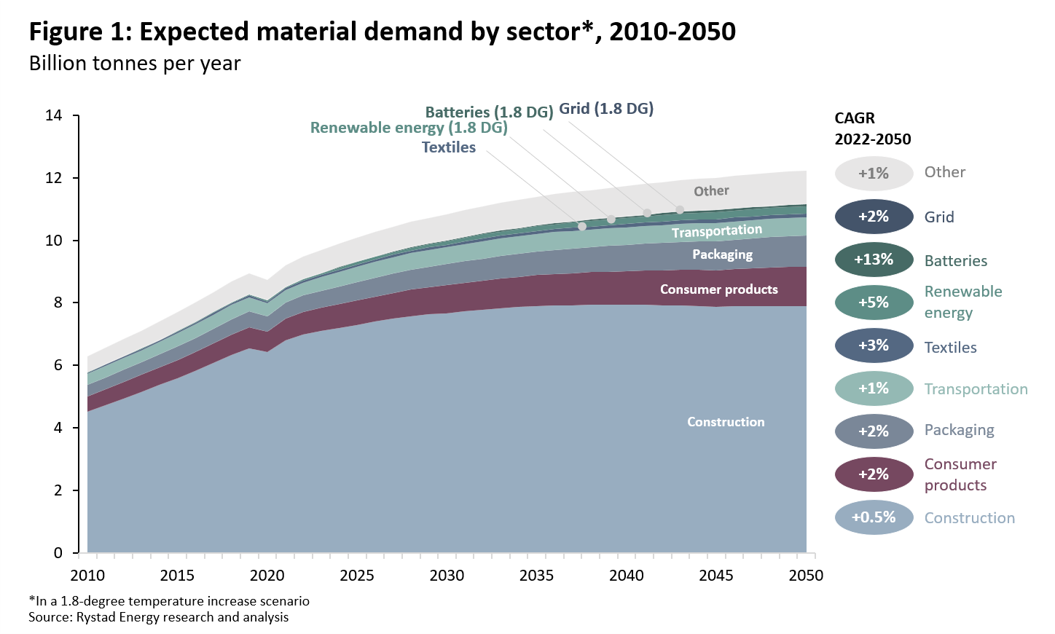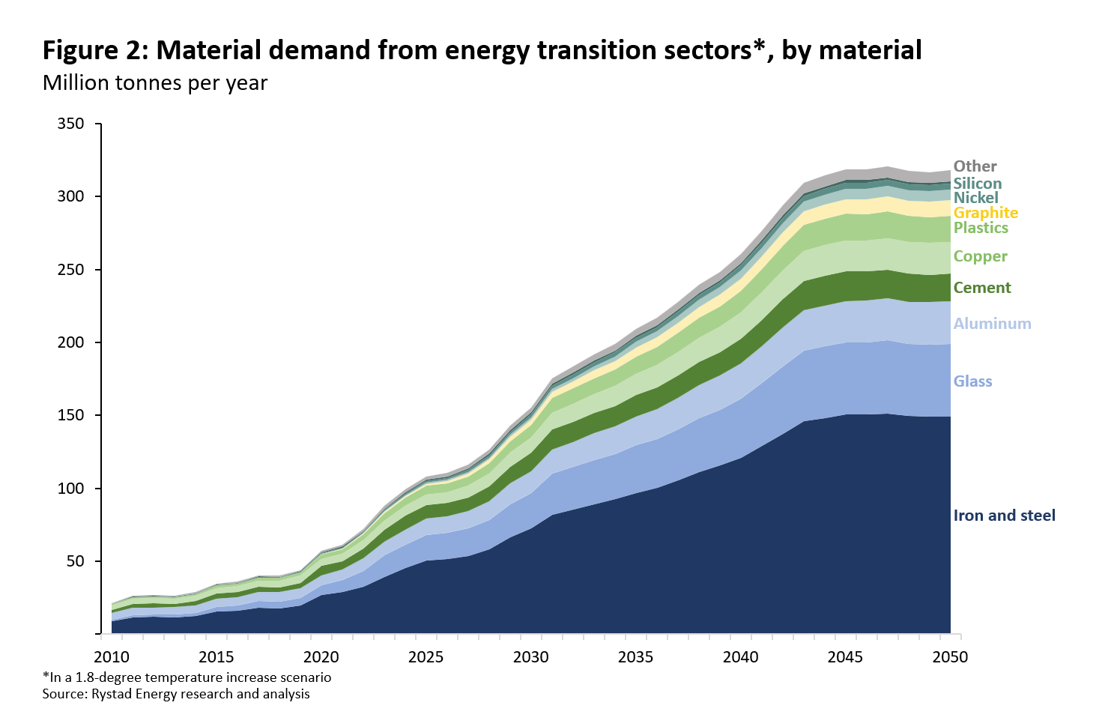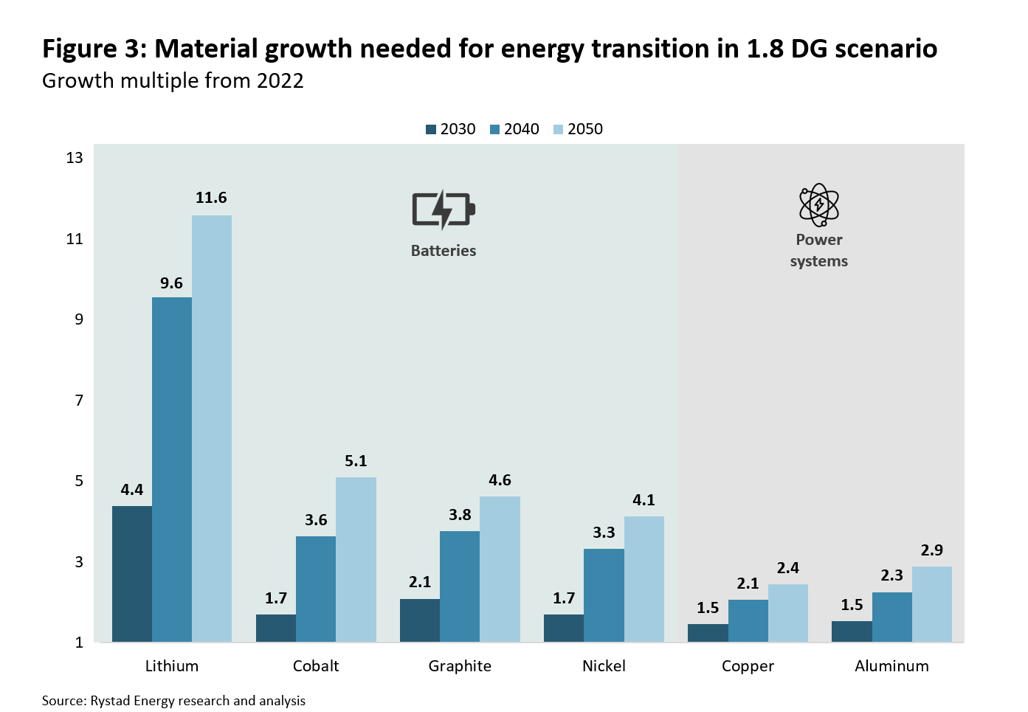The world’s total demand for materials is expected to climb around 30% from just over 9 billion tonnes (Gt) in 2022 to more than 12 Gt in 2050. Continued economic expansion and population growth are expected to be the main drivers of the surging need for more materials. The biggest-consuming sectors are mature industries like construction, consumer products, packaging, and transportation, which made up around 90% of the material demand by weight in 2022. The construction sector was by far the largest among the four, alone accounting for nearly three-quarters of all materials consumed in 2022
(Figure 1). While construction will continue to dominate, materials needed for the energy transition will see the largest relative jump in demand towards 2050.

The materials in highest demand throughout the period are traditional materials like cement, wood, and iron and steel, which are central building blocks to the global economy, with the vast majority flowing into construction. Cement is used in almost all building and infrastructure activity and is often reinforced with steel beams or bars.
Although only making up a small share of the total materials by weight, renewable energy and batteries will increase the most in relative demand towards 2050, propelled by the energy transition. The battery sector is set for a compound annual growth rate (CAGR) of 13%, while the renewable energy sector is expected to rise by 5% annually towards 2050 (Figure 1).

Although a large share of the material demand from the energy transition is for materials with mature supply chains, like iron and steel, glass and cement (Figure 2), the energy transition requires significant expansion of certain energy material-related value chains to succeed. Battery materials such as lithium, and metals commonly used as electric conductors, like copper and aluminum, are expected to require the highest supply growth compared to 2022 levels to enable the energy transition (Figure 3).

The increased need for battery materials is driven by the high pace in the electrification of road transportation and battery energy storage systems. All commercial battery technologies are dependent on lithium-ion-based technologies, and lithium is expected to see the highest growth of any material. Nickel-manganese-cobalt (NMC) battery cathodes are expected to see continued high market shares for the next decade, resulting in a strong boost for nickel and cobalt as significant shares of the global production will be needed by the battery sector. Graphite has close to 100% market share in battery anodes, in addition to being used in industrial equipment, castings and similar.
Demand for copper and aluminum is increasing due to their popular applications as electric conductors. Copper is mostly used in cabling, electrical equipment, and electric motors, which are needed in energy transition segments like electric vehicles, energy storage, solar and wind. Aluminum is expected to substitute copper as an electric conductor in some applications due to its lighter weight and lower cost.
The requirements of the energy transition are expected to trigger massive demand growth for some critical materials that do not necessarily have a mature value chain, that therefore will see an explosive expansion from current levels. Further, rapid expansion within energy transition sectors is expected to alter the trade flows of mature materials, which will need to be rerouted to new energy transition value chains. This development will create both challenges and opportunities for governments, regulatory institutions, and companies, where the right positioning is crucial in order to succeed with the energy transition.
ADVERTISEMENT
More Top Reads From Oilprice.com
- Are U.S. Steel Prices Poised for a Rebound?
- After Campaigning on Free Natural Gas, Erdogan Hikes Prices by 38%
Lower LNG Prices Drag Cheniere’s Q2 Profit Down by 36%


















